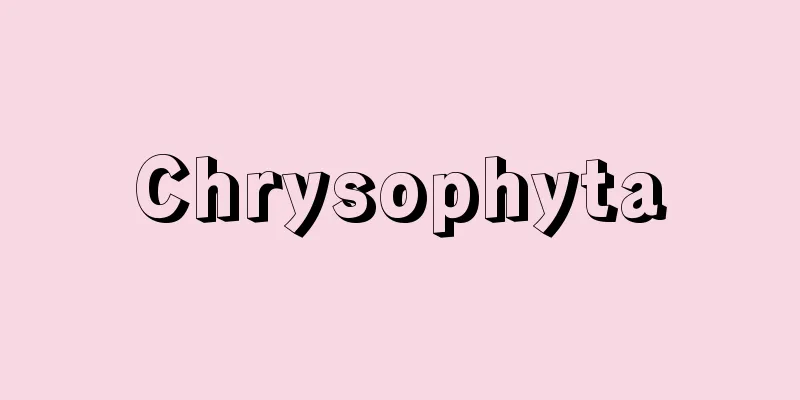Ura role - Urayaku

|
A type of labor tax or miscellaneous tax imposed on coastal fishing villages from the Edo period or earlier. At first, it was collected as labor for salvaging shipwrecks and transporting the Shogunate's cargo by sea, but gradually it came to be paid in rice and currency. In such cases, it was also called "urayaku rice" or "urayaku money (silver)." In return, the villages that performed the urayaku duties were granted the right to fish in their coastal waters and the right to use the urahama beach. In Nanao Town, Kashima County, Noto Province (Nanao City, Ishikawa Prefecture), a 3 kanmon silver levy for 1843 (Tenpo 14) appears in the small item tax. In Kagaura, Shimane County, Izumo Province (Matsue City, Shimane Prefecture), 7 koku of brown rice was levied as levy rice tax. In the bay villages of the Tanabe Domain in Muro County, Kishu (Wakayama Prefecture), the sea transport of official cargo was called bay tax, and all sea transport of official cargo was the responsibility of the bay tax. In Tadaoka Village, Izumi County, Senshu (Tadaoka Town, Senboku County, Osaka Prefecture), 12 momme of bay tax silver was paid in installments to fishing boats. In addition, Minato Village, an outlying village of Nakasho Village, Hine County, Senshu (Izumisano City), did not have a beach within its own village, so it paid 220 momme of silver tax to the neighboring village of Sano every year to borrow the beach of Sano Bay, where it would land its ships and unload ash sacks for sale. Furthermore, in Wakihama Village, Hine County (Kaizuka City), the "bay tax of 11 koku, 7 to 4 sho" and this "bay tax of 100 mon" were the "bay tax" and "bay tax" fees imposed in exchange for the bay's fishing rights to its territory, and these were based on the number of bay towns (24 cho, 53 ken, north to south) that were tied to rice yields, and the "bay tax" was levied based on that rice yield. The port city values seen here are of the same quality as the sea values (sea stones, port stones) of Awa, Kazusa, Shimousa, Nagato, etc. [Sadao Kawanabe] "Research on Historical Materials on Early Modern Fishing Villages" by Yutaka Nomura (1956, Sanseido) Source: Shogakukan Encyclopedia Nipponica About Encyclopedia Nipponica Information | Legend |
|
江戸時代あるいはそれ以前から、沿岸の浦方(漁村)に課せられた賦役(ぶやく)または小物成(こものなり)(雑税)の一種。初めは、難破船の救助、幕府荷物の海上運搬など賦役の形で徴収されたが、しだいに米や貨幣で納めるようになった。そうした場合、浦役米、浦役銭(銀)とも称した。浦役を勤める浦は、その見返りとして地先(じさき)漁業権や浦浜利用権が認められていた。 能登(のと)国鹿島(かしま)郡七尾(ななお)町(石川県七尾市)では、1843年(天保14)の小物成に浦役銀3貫文がみえる。出雲(いずも)国島根郡加賀浦(かかうら)(島根県松江市)では浦役米として玄米7石が賦課されている。紀州(和歌山県)牟婁(むろ)郡の田辺(たなべ)藩領の浦付村々では、公儀荷物の海上輸送を浦役と称して、すべての公儀荷物の海上輸送は浦役の負担であったという。泉州(せんしゅう)泉郡忠岡(ただおか)村(大阪府泉北郡忠岡町)では12匁の浦役銀を漁船に割賦して納めている。また、泉州日根(ひね)郡中庄(なかしょう)村(泉佐野市)の出村である湊(みなと)村は、自村に浦浜がないため、隣村佐野村へ毎年浦役銀220匁を差し出して佐野浦の浜を借り、ここに着船して商売物の灰俵を陸揚げしていた。さらに、日根郡脇浜(わきはま)村(貝塚市)にみられる「浦役高拾壱石七斗四升」、この「浦役銀百目」は、浦方の地先漁業権の代償として「浦役高」「浦役銀」があり、それは浦町数(南北24町53間)を石高に結び、その石高を基準に「浦役銀」が課せられたものである。ここにみられる浦役高は、安房(あわ)、上総(かずさ)、下総(しもうさ)、長門(ながと)などの海高(うみだか)(海石(うみこく)、浦石)と同質のものである。 [川鍋定男] 『野村豊著『近世漁村史料の研究』(1956・三省堂)』 出典 小学館 日本大百科全書(ニッポニカ)日本大百科全書(ニッポニカ)について 情報 | 凡例 |
Recommend
Ikeshi Hokou
…In many cases, it was longer than indentured ser...
"One Heart, Two Rivers, White Path"
The cast includes Sakurahime, later Furinohime, p...
Furnarius rufus (English spelling)
...Many species live on or near the ground, build...
Solvation - solvation
In a solution, several solvent molecules bind aro...
Infant tone - infant tone
…In the circle of fifths, there are six closely r...
serial printer
...A printer that prints one line at a time as a ...
Common orange (English spelling)
…When we say orange, we usually mean this sweet o...
Brodiaea (English spelling)〈Latin〉Brodiaea
A bulbous plant of the lily family. It produces pu...
Metaxas, Ioannis
Born: April 12, 1871, Isaki Island [Died] January ...
Cheddar cheese
…The maturation period is 3 to 5 months. (5) Ched...
Leitourgia
… [Concept and Essence] Liturgy is the general te...
Tambov
The capital of Tambov Oblast in western Russia. It...
Payroll name - Kyuumyo
〘Noun〙 In the Middle Ages, land stewards and manor...
Autogiro (English spelling)
A type of rotorcraft that generates lift using rot...
Yoshisuke Aikawa
Born: November 6, 1880 in Yamaguchi [Died] Februar...









